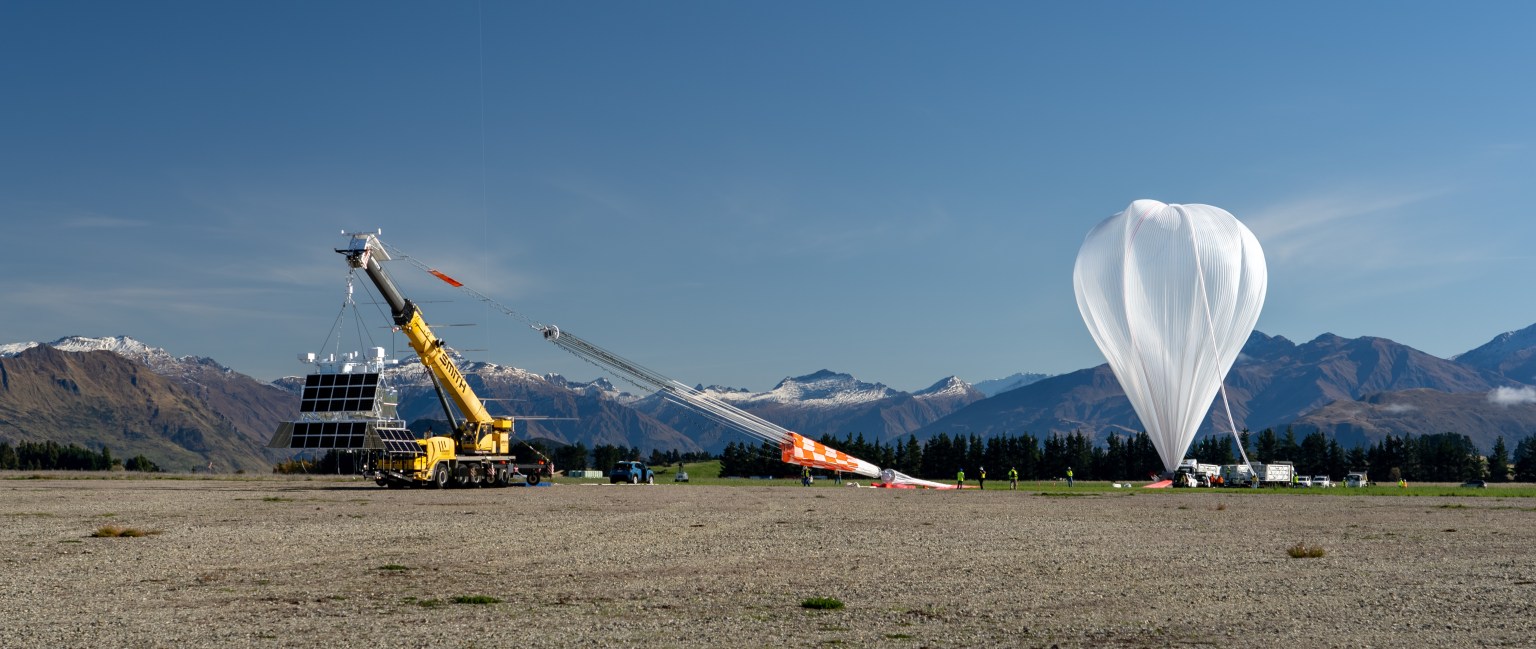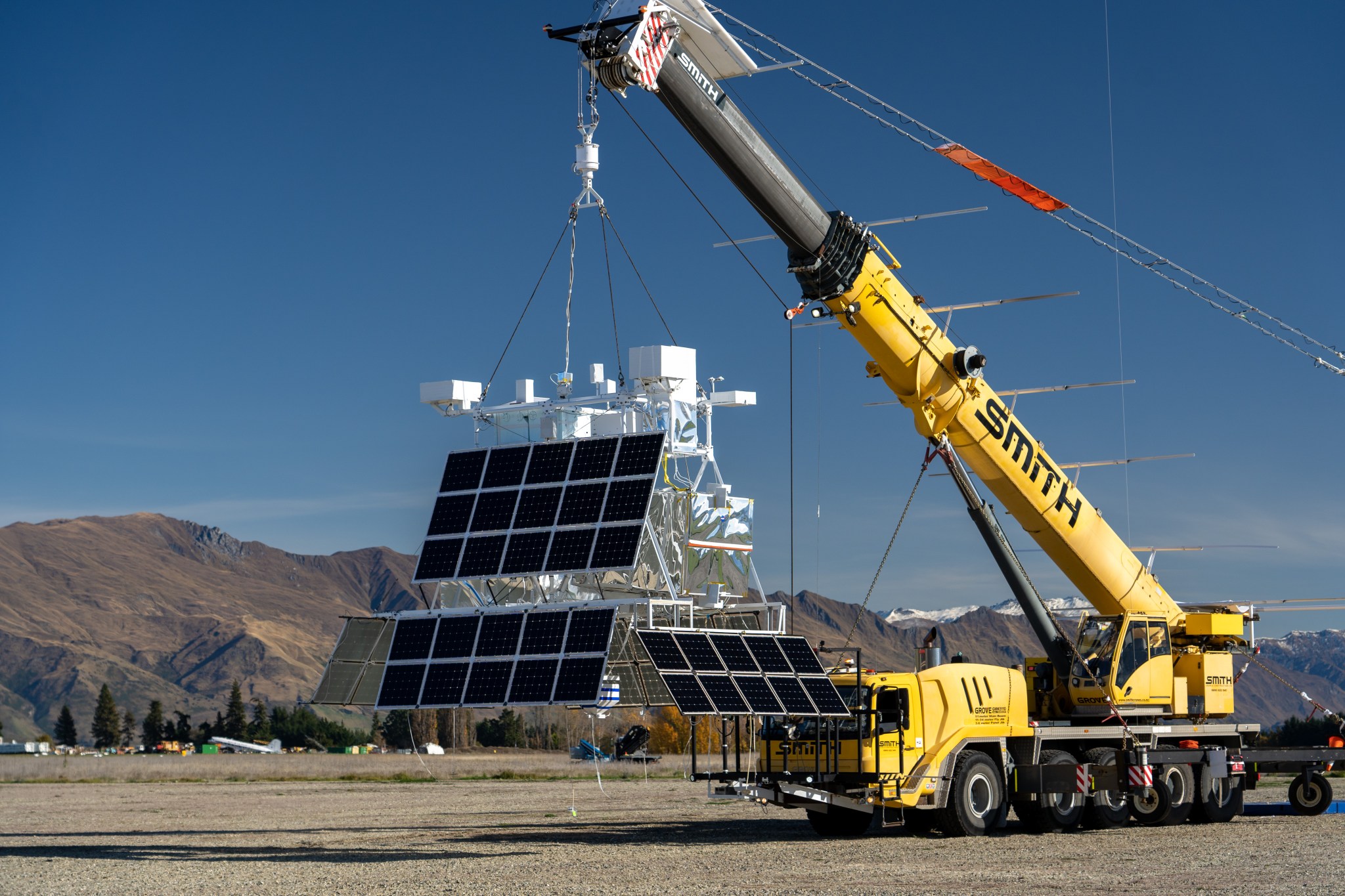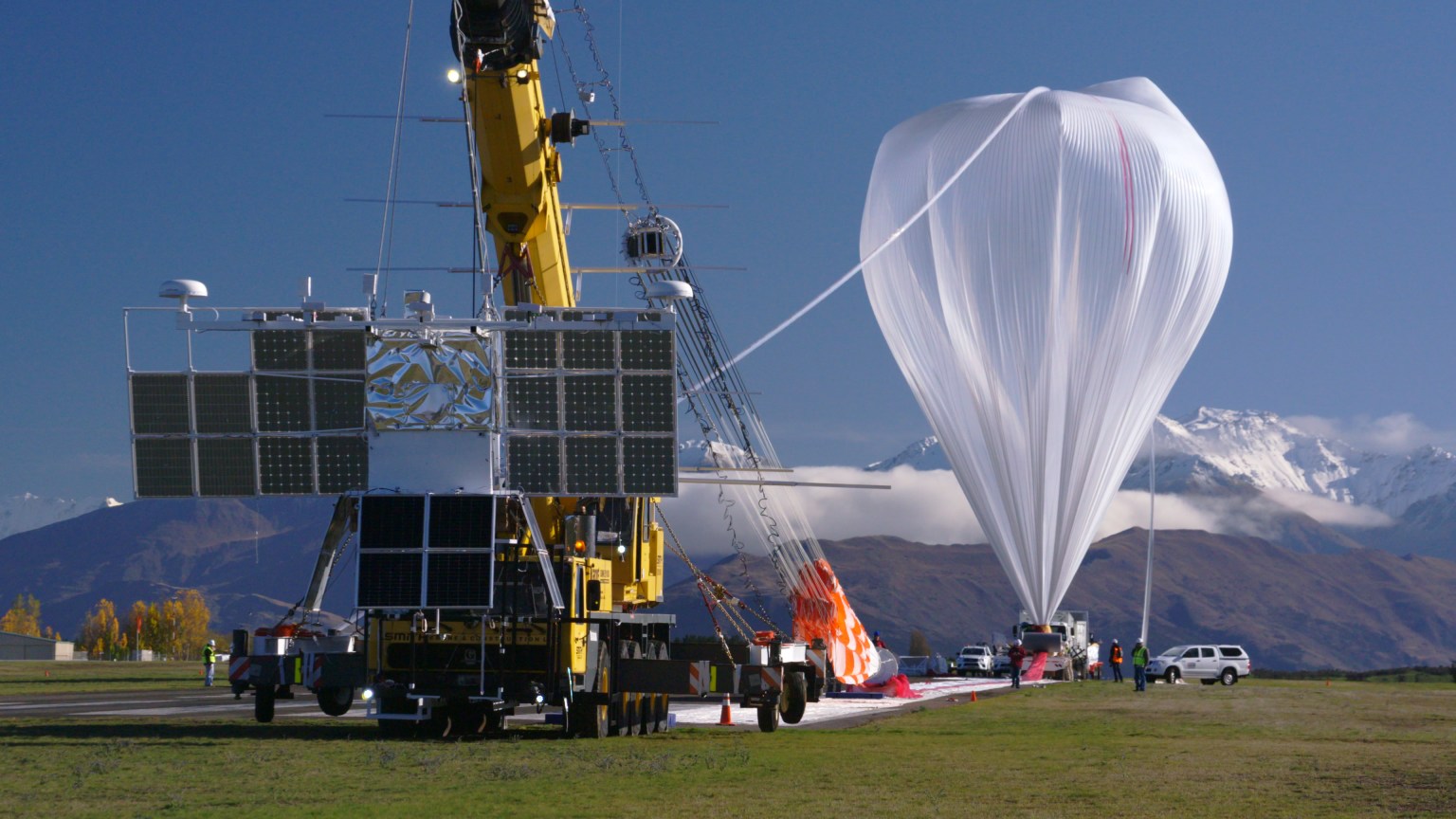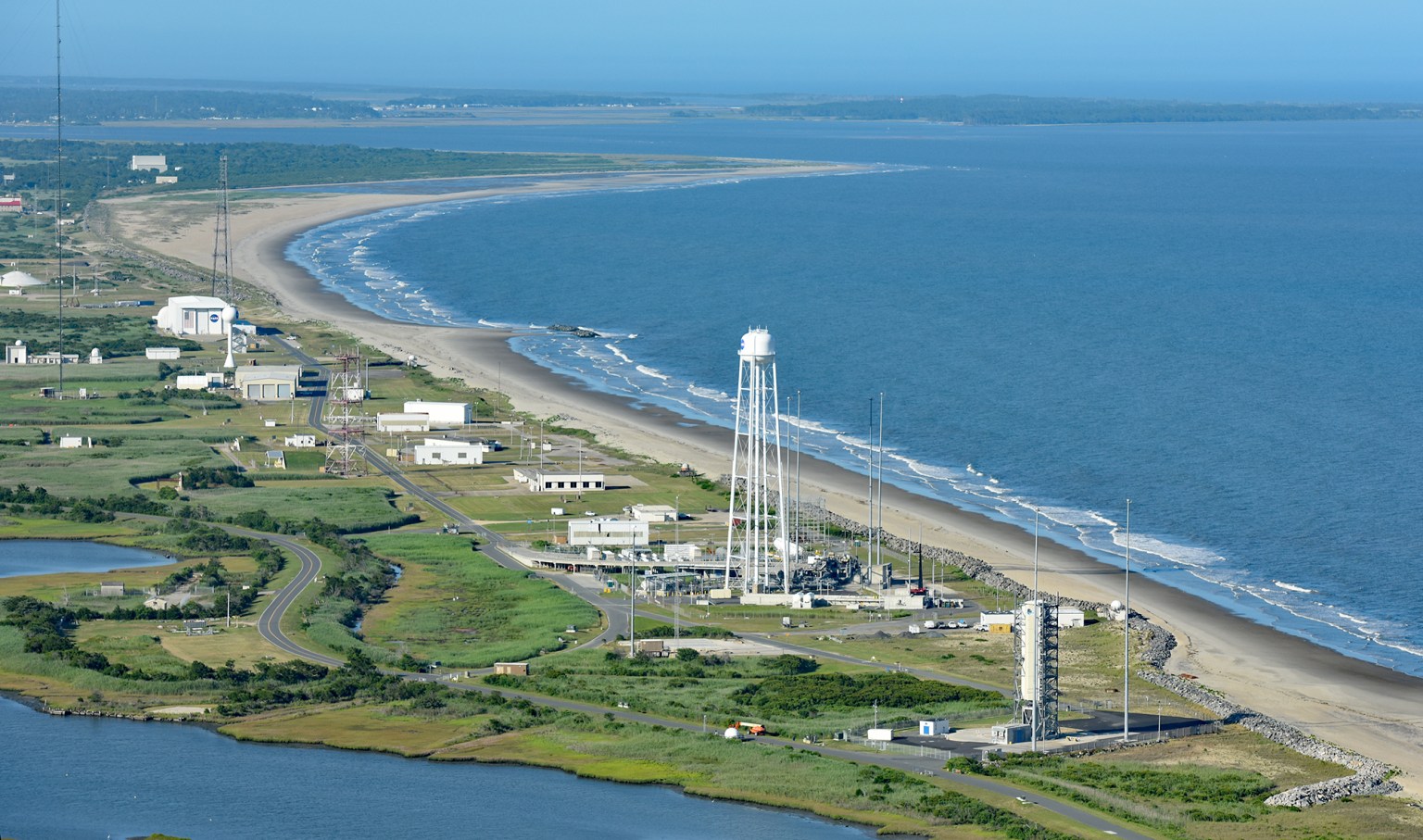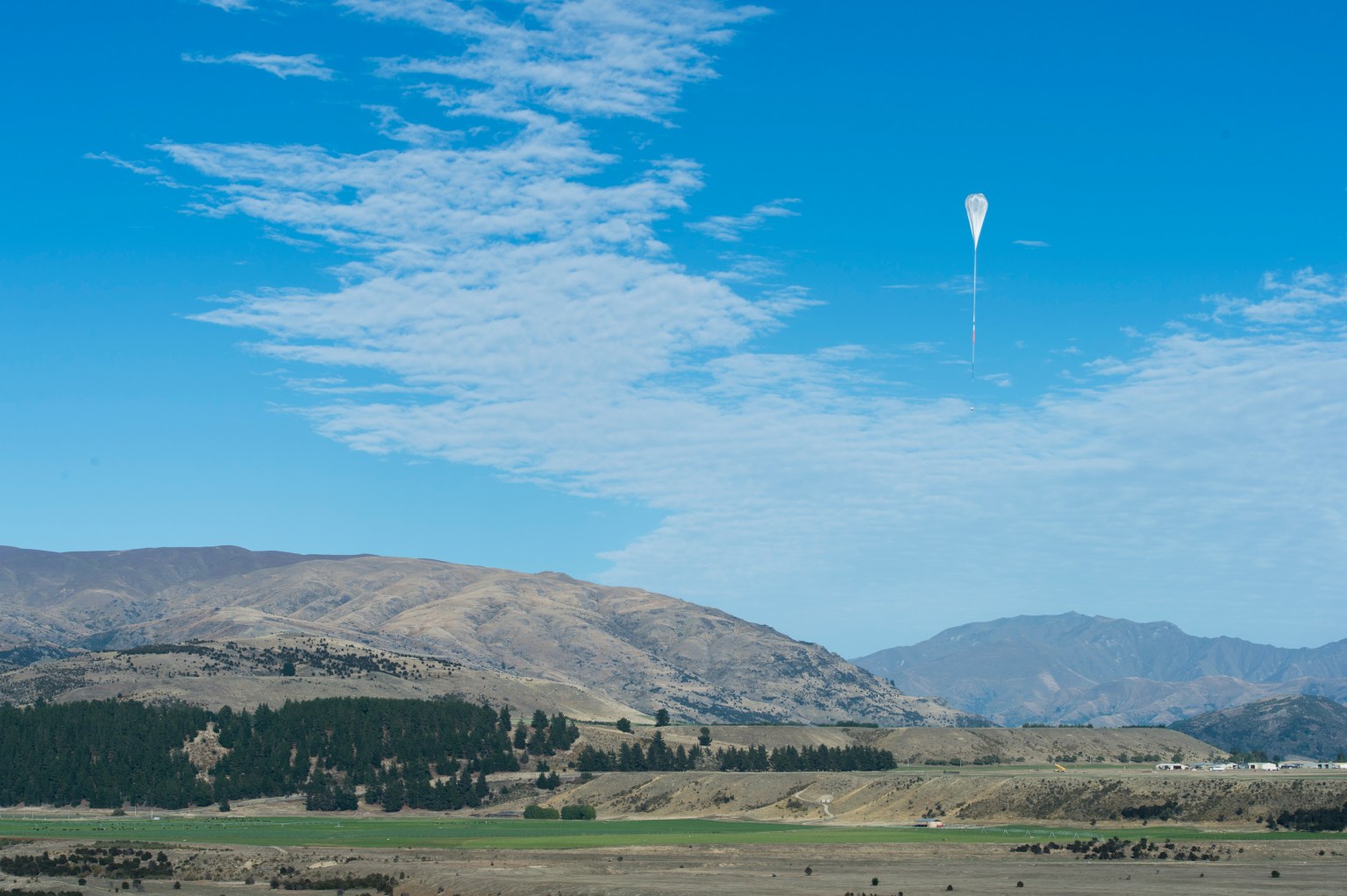Update May 14, 2023: After a successful launch and more than a day in flight, our super pressure balloon carrying EUSO-2 developed a leak, and flight controllers safely terminated the flight over the Pacific Ocean. NASA will investigate the cause of the anomaly. Read more on our super pressure balloon blog post.
NASA’s Scientific Balloon Program has launched a second football-stadium-sized, heavy-lift super pressure balloon (SPB) from Wānaka Airport, New Zealand, on a technology mission aimed for 100 days or more of flight in the Earth’s upper atmosphere.
“To have two long-duration super pressure balloons in flight at the same time performing science in the Southern Hemisphere’s mid-latitudes has been a goal more than 15 years in the making, and I’m so thrilled that on this day, we did it!” said Debbie Fairbrother, NASA’s Scientific Balloon Program chief. “I could not be prouder of our balloon and science teams for their accomplishment. With these two flights, we are setting ourselves up to support more and more-advanced science in the coming years.”
Flying on this second balloon is the Extreme Universe Space Observatory 2 (EUSO-2), a science mission from the University of Chicago that aims to build on data collected during a 2017 mission. EUSO-2 will detect ultra-high energy cosmic-ray particles from beyond our galaxy as they penetrate Earth’s atmosphere. The origins of these particles are not well known, so the data collected from EUSO-2 will help solve this science mystery. Along with EUSO-2 being a science mission of opportunity, the overall goal of the mission is to test and qualify the super pressure balloon technology for flight.
This balloon launch is the second and final for NASA’s 2023 New Zealand balloon launch campaign. The first balloon launched at 11:42 a.m. NZST, Sunday, April 16 (7:42 p.m. April 15 in U.S. Eastern Time). That mission is performing nominally and has already completed three revolutions about the Earth’s southern hemisphere flying at about 108,000 feet.
NASA invites the public to follow these missions as they fly on their globetrotting journeys about the Southern Hemisphere’s mid-latitudes, said Fairbrother. A balloon’s flight path is controlled by the wind speed and direction at float altitude. The missions will spend most of their time over water, and for any land crossings, NASA works with the U.S. State Department to coordinate country overflight approvals. Real-time tracking of these flights is publicly available here. In addition, NASA publicizes balloon launch and tracking information via the web at www.nasa.gov/balloons and across NASA’s social media platforms.
Maintaining a constant float altitude in the stratosphere is a formidable challenge for airborne systems, including balloons. Most standard heavy-lift zero pressure balloons can vary in altitudes as much as 45,000 feet (13.7 km) due to the alternating warming and cooling of the day-night cycle. In response, mission operators typically release excess weight in the form of ballast to maintain altitude. The SPB, in contrast, is designed to maintain a positive internal pressure and shape irrespective of its environment, which keeps the balloon at a stable float altitude without dropping ballast.
The 18.8-million-cubic-foot (532,000-cubic-meter) balloon is helium-filled and about the size of a football stadium when fully inflated at its operational float altitude of about 110,000 feet (33.5 kilometers). Wānaka is NASA’s dedicated launch site for mid-latitude, long-duration balloon missions.
NASA conducts SPB launches from New Zealand in collaboration with the Queenstown Airport Corporation, Queenstown Lake District Council, New Zealand Space Agency, and Airways New Zealand.
NASA’s Wallops Flight Facility in Virginia manages the agency’s scientific balloon flight program with 10 to 15 flights each year from launch sites worldwide. Peraton, which operates NASA’s Columbia Scientific Balloon Facility (CSBF) in Texas, provides mission planning, engineering services, and field operations for NASA’s scientific balloon program. The CSBF team has launched more than 1,700 scientific balloons over some 40 years of operations. NASA’s balloons are fabricated by Aerostar. The NASA Scientific Balloon Program is funded by the NASA Headquarters Science Mission Directorate Astrophysics Division.
For more information on NASA’s Scientific Balloon Program, visit:




























